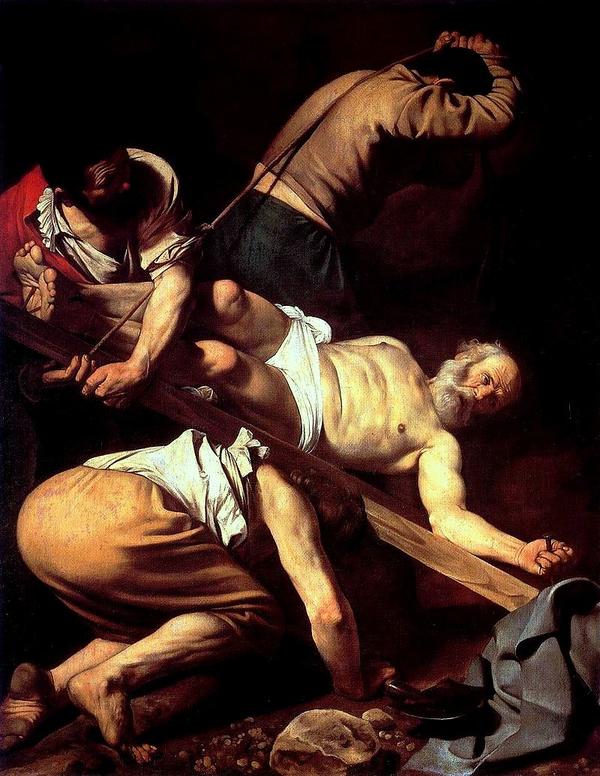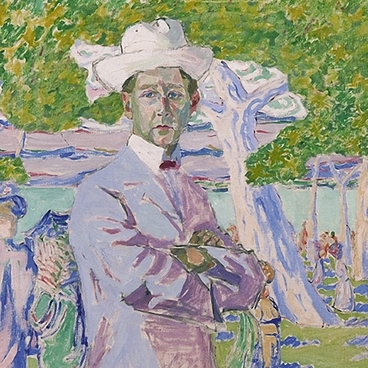At the beginning of the 17th century, during the separation of European art schools, the influence of the founder of realistic art, Caravaggio, penetrates into Flanders from Italy. His manner of sharply contrasting light and shadow, ‘chiaroscuro’, forever changed the idea of European painting of the Baroque era.
The Torment of St.Adrian
Creation period
17th century
Dimensions
147x110 cm
147×110 cm
147×110 cm
Technique
oil on canvas
Exhibition
2
Open in app#1
Jan Janssens
The Torment of St.Adrian
#6
#3
Caravaggio. The Crucifixion of Saint Peter. 1601. Oil on canvas. Cerasi Chapel, Rome
Nevertheless, it was precisely in Flanders that caravagism did not have the same significance as in other European countries. Most Flemish artists in their works continued to follow the previously established pattern. Typical of Flemish caravagism is a painting by Jan Janssens, the son of a doctor in Ghent, ‘The Torment of St. Adrian’. The artist lived in Italy for many years, where he was influenced by Caravaggio’s creativity and adopted the characteristic features of the Baroque style: hot color, sharp black and white contrasts, emphasizing the drama of what is happening.
#7
Jan Janssens takes a motif, based on the story about the follower of the teachings of Christ Adrian tortured in Corinth in the 3rd century A.D. Neither persuasion nor torture could force him to change his beliefs and abandon the Christian faith, for which he was canonized.
The composition of the picture is closed, deployed in one plane and based on sharp contrasts. The author focuses the attention of the viewer on the brightly sanctified, almost naked figure of a young man in the foreground. Next to Adrian are the executioners, and among them is a woman sympathetic to the martyr. Their poses, facial expressions, gestures, the victim’s look, the compassion of the young peasant woman, the contrasts of lighting - all these are techniques expressing the sharpness and drama of the scene.
Janssens’s appeal to religious subjects can be explained by the dominant position of the church in the spiritual life of the 17th century Flemish society and the custom-made character of most of the works created by artists. Jan Janssens performed the painting “The Torment of St. Adrian” for the church of St. Martin in the city of Ghent, where it remains. The collection of the Penza Art Gallery contains its reduced authorial version.
The plot of the picture reflects the current state of affairs in Flanders of the XVII century and is topical for the author. Spain controlled Flanders; its rule in this region was accompanied by executions and looting of the population. The torturer, with his back to the viewer, endowed with Spanish facial features and put on the appropriate costume. St. Adrian appears in the picture as the image of Flanders, which is undergoing torment from the Spaniards.
Famous philanthropist, Ramzai landowner Lyubov Protasyeva, presented the canvas to the museum in the 1910s. For about 60 years, the author of the picture was unknown. Specialists of the gallery and the State Hermitage conducted restoration and research, which made it possible to establish the true value of the work. There are very few works by Jan Janssens in the world, so the canvas in the art gallery is of great value.
#8
Penza Regional Picture Gallery named after K.A. Savitsky
read morehide
00:00
00:00
1x
The Torment of St.Adrian
Creation period
17th century
Dimensions
147x110 cm
147×110 cm
147×110 cm
Technique
oil on canvas
Exhibition
2
Open in app
Share





